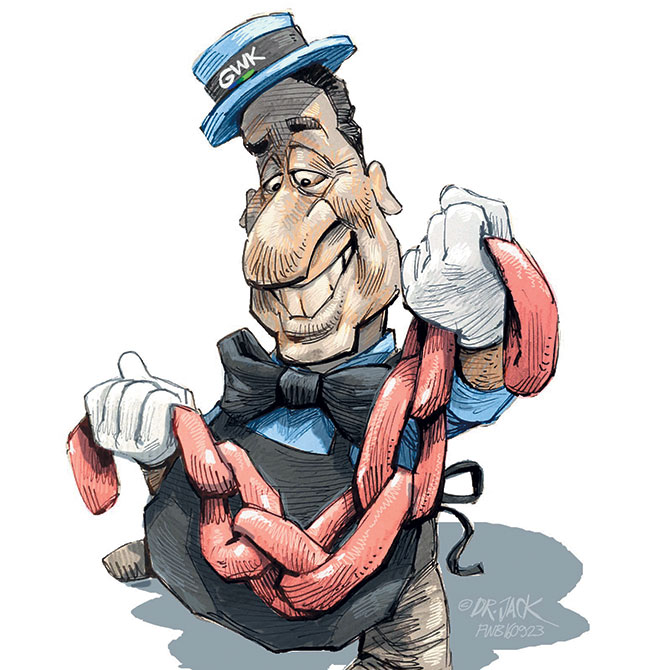
Rather, it is the result of an outdated trading system, and a fragmented supply chain. Cilliers writes that all stakeholders and role players, including producers, abattoirs and retailers, are responsible for reviving consumer demand.
According to Statistics South Africa’s CPI basket data, lamb and mutton currently constitute 13% of consumers’ average meat basket, compared with 16% only three years ago.
The decrease in consumer demand for lamb and mutton is a result of shoppers preferring to buy other meat products such as beef, chicken and pork, which offer greater consistency in price and supply.
This fall in market share cannot be blamed on the drought or consumer taste. Instead, it is caused by the fragmented nature of the lamb and mutton supply chain.
There are more than 280 abattoirs in the southern regions of the country, all competing for ‘slaughter units’ and offering meat to a limited number of buyers. This drop in the popularity of lamb and mutton will continue unless the supply chain corrects itself to consistently offer good quality meat at steady prices.
How the market system works – and doesn’t
The current trading environment in which producers sell their stock is an outdated system. It may have worked well before the proliferation of abattoirs and wholesalers in South Africa, but the practice of ‘shopping’ for an abattoir that offers the best price for stock on any particular day negatively effects the entire supply chain.
The overcapacity of abattoirs allows producers to negotiate prices for their benefit, thereby driving prices up. Meanwhile, abattoirs offer the slaughtered carcasses to wholesalers that quickly determine the abattoir’s total offering, thus forcing prices down.
Furthermore, the practice of setting weekly prices and then taking bookings for slaughter units provides a very short-term view of the volume that can be offered to the market.
The result is an uncertain, volatile supply from the industry, as producers will not commit long-term volumes to any specific abattoir, because they want to ensure the highest prices when they have slaughter units available.
Producers under price pressure
Farmers who do not consistently produce are under pressure to accept the best possible price on the day that they are ready to sell. There is no forward market planning, and each producer is dependent on the abattoirs to set market prices.
Because of this, producers withhold stock when prices are low and market when prices increase, worsening price volatility.
To avoid this, farmers should supply the market when their units are ready, or else form supply groups with specific
supply chains to ensure consistency.
Producers who are forced to market their animals when prices are low due to cash flow constraints, or because the animals will lose their top grading if kept any longer, end up losing out. In times of good supply, prices tend to decrease and producers are not rewarded adequately.
Abattoirs and farmers’ profits: an example
Abattoirs apply downward pressure on prices, which, in turn, affects producers’ profitability, as seen in the following scenario:
Abattoir A offers producer X a price of R60/kg for a 20kg, A2 slaughter lamb.
Abattoir B, desperate for stock, offers slightly more at R62/kg. Thus, after the deduction of statutory levies, the
producer nets R61/kg, or R1 220/unit.
Abattoir B then offers its newly purchased stock to wholesalers and retailers. Due to the oversupply of stock from
abattoirs, wholesalers and retailers bargain the price down.
Abattoir B accepts R59/ kg, or R1 180 per unit, for a loss of R60 per carcass. While Abattoir B can also sell the skin and offal for about R160 per carcass, it still generates a net contribution of only R60 per processed carcass. If its fixed operating costs are R1,2 million/ month, it needs to process and sell 20 000 units just to break even.
Abattoirs sell carcasses as perishable products to be sold immediately, which results in wholesalers and retailers buying only from abattoirs that offer the lowest prices in times of sufficient supply, thereby driving prices down further.
Abattoirs are not only vulnerable to seasonal fluctuations in production, but have little control over returns on their
investment, and have to balance small price differentials with their input costs as explained in the above scenario.
Banding together to provide a steady supply
Producers should look at mechanisms to equalise supply and stabilise prices, and ultimately grow demand for their products
by giving the consumer consistent quality and volume, thus removing speculative trading from the market. With stakeholders under pressure to make profits, meat supply throughout the value chain has become inconsistent, and consumers with limited budgets are faced with fluctuating prices, inconsistent quality and erratic supply.
At GWK Meat, we believe that there are ways in which producers can regain control of their roles in the supply chain, and of the profitability and success of their enterprises:
- Producers should understand that consistent supply and quality will increase demand.
- Producers have to discover ways in which they can coordinate their supply through farming practices, planning and collective supply management. Most importantly, farmers must have long-term plans, and partner with the rest of the chain to manage supply.
- Producers should understand their roles in the value chain, and find ways in which to manage its dynamics to their own advantage. This is closely related to the second step, which requires that farming practices are adapted so that producers are actively and consistently involved in the market.
- Producers must firstly get to know consumers’ needs and buying behaviour. Then they should devise long-term marketing strategies based on this, and market in conjunction with fellow producers.
- It is very difficult to change farming practices, but grazing management is key to ensure that stock levels can be maintained. Overstocking in times of good grazing will result in forced marketing in leaner times.
- Lambing seasons should be arranged to supply market-ready lambs more frequently. There are good examples of producers who have managed this and are extremely successful at supplying consistently. One is Lovedale Dorpers near De Aar, one of the top suppliers of certified natural and free-range lamb.
- Producers should also look to complying with protocol requirements of niche product lines such as Certified Natural and Free Range; these offer small premiums and require specific farming practices, quality standards and consistent supply. A more consistent produce supply means that farmers are able to negotiate longerterm prices with abattoirs, providing them with certainty of return on their investment. Abattoirs, in turn, are assured of more consistent supply of stock, and will be able to negotiate longer-term arrangements with wholesalers. The latter will then be able to assure retailers of consistent supply and price, which will boost the profitability of the product class.
The views expressed in our weekly opinion piece do not necessarily reflect those of Farmer’s Weekly.
For more information, phone Alex Cilliers on 053 298 8200, or email him at[email protected].












